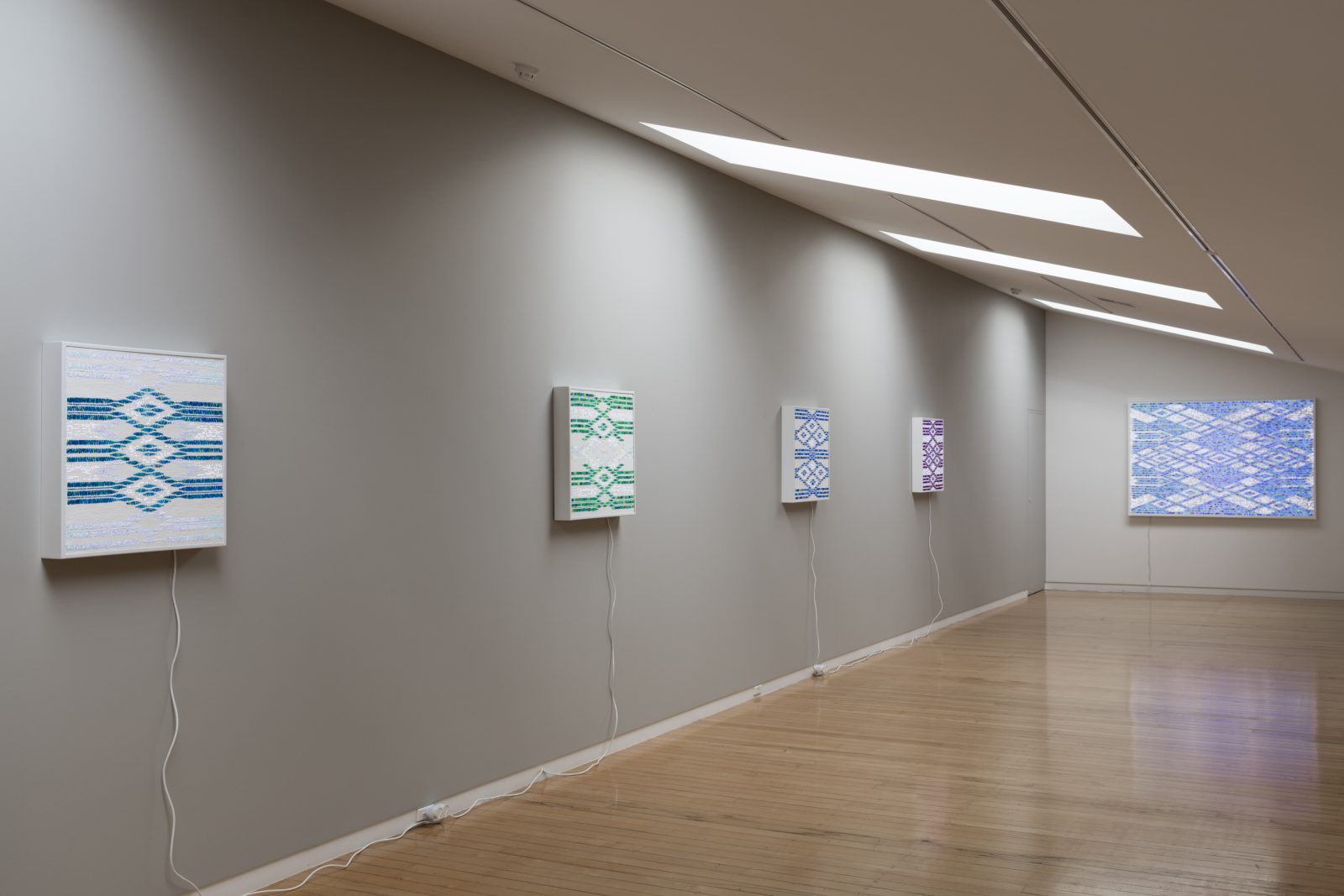Peata Larkin
Fourth State of Matter
15 July - 13 August 2016
Delicately and meticulously constructed, Peata Larkin’s new light-boxes are highly individualised artworks. The richly woven paint surfaces are achieved by stretching a mesh over a frame where the warp remains rigid and the weft is worked and manoeuvred to create the desired pattern. The surface is then built up through successive applications of white acrylic that leaves some areas open and some completely blocked out. Those open spaces are then filled in with a liquid pigment mixed with a transparent gel. The painted surface is cut from this original armature and re-stretched onto a bespoke aluminium z- clamped frame on which flexiface, a light diffusing membrane, is stretched over beforehand. The resulting under pattern and the overlaid lattice of paint pays homage to the traditional tukutuku art form of her Maori heritage with the works being loosely based around the Patikitiki pattern.
Further inspiration is drawn from the natural world, with each work representing a celestial object such as a galaxy, star, constellation, or interstellar cloud, and their observed properties inform the colour and thickness of the paint that Larkin uses. Indeed, the painted light-boxes are richly evocative both in process and visual outcome. The use of a threaded ground and the artful manipulation of certain strands recall European tapestry and lace making traditions while, visually, the works reference contemporary advancements in medicine and computer science with prominent echoes of genetic sequences, source codes, and digital pixels. The final result reveals a sculptural use of paint, with pigment pushed proud of the surface ground.
Larkin’s artworks offer an array of viewing options for the spectator. Lit from the back by LED, they are radically different when illuminated, and when viewed in natural or artificial light. These four possibilities (or four different states) are alluded to in the title of the exhibition, but the title is also specifically concerned with the four primary states of matter – gas, liquid, solid, and plasma – the latter of which plays a key role in several optical mediums including neon lights and the plasma display panels commonly used in large televisions prior to 2014. For Larkin, there are two points of relevance. Firstly, the connotative properties of “matter” in relation to her process and the various mediums that are used – gels, liquids, solids, and light (electrons and photons). Secondly, the effect that the LED’s have on the paintings, creating the impression of shifting matter as viewed with the lights off, the works are unequivocally solid, but once illuminated the small beads and dots of coloured pigment take on an ethereal quality, as though the solid paint has returned to its original liquidity.
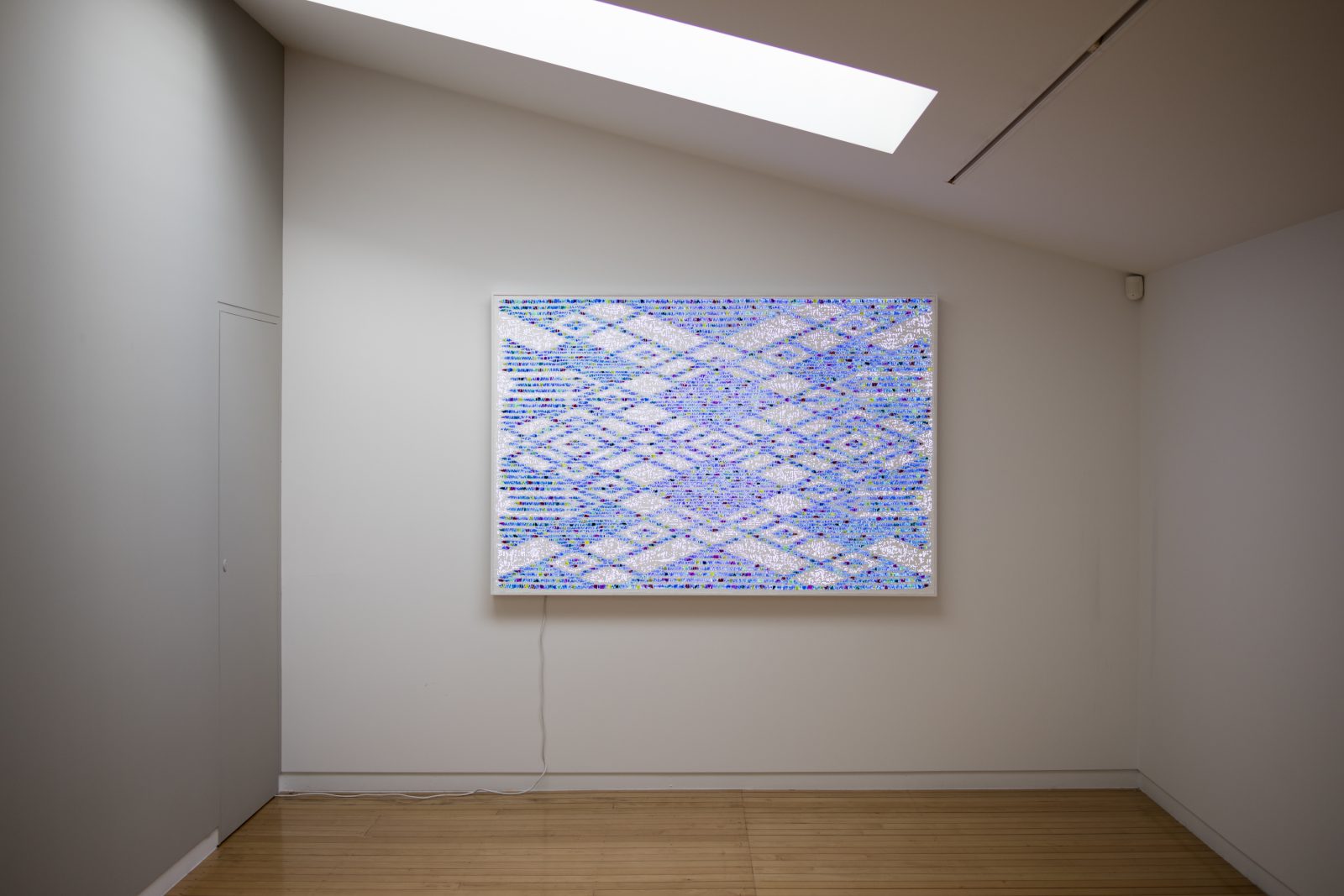
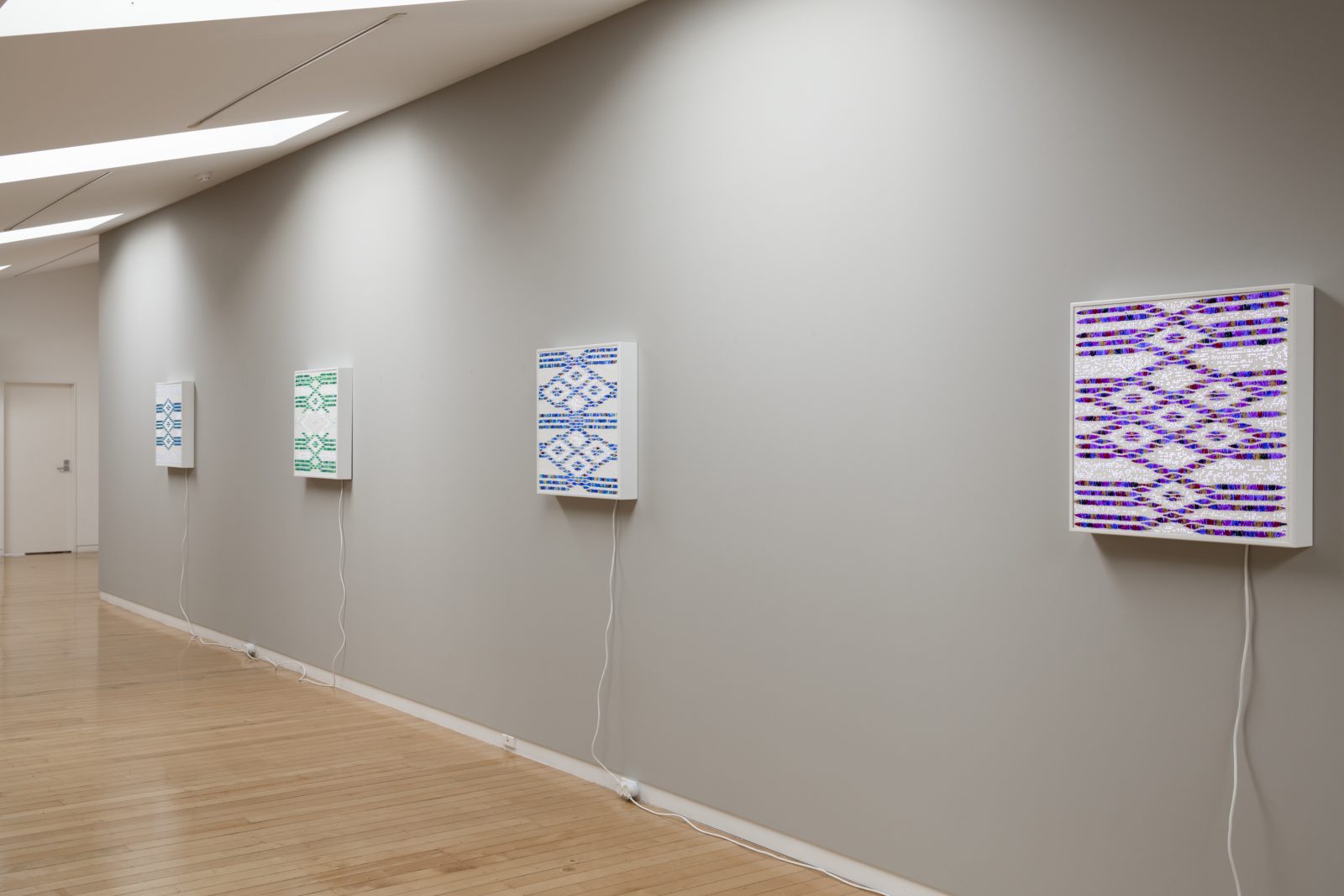
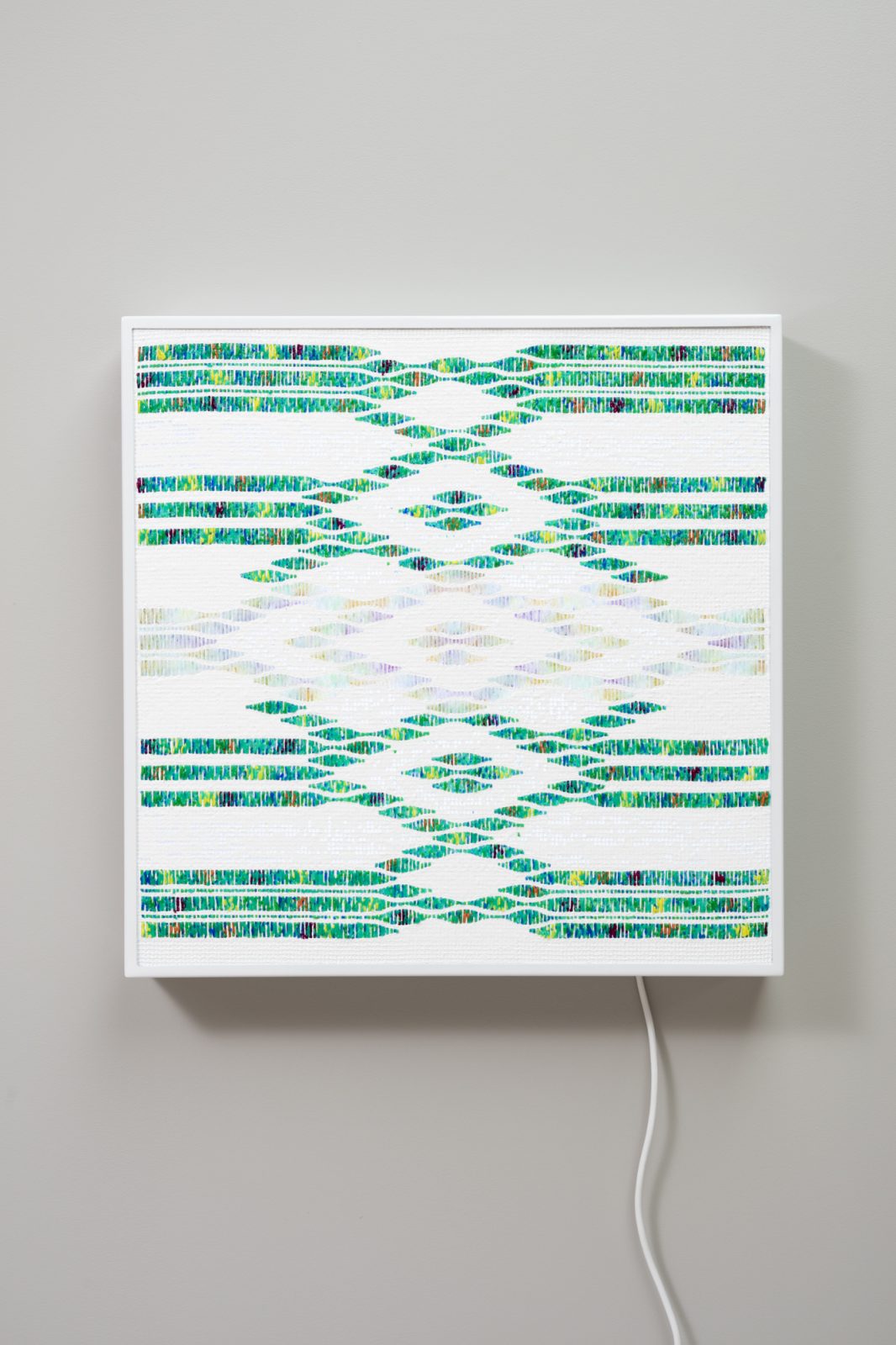
Acrylic gel and pigments on mesh and flexiface on LED lightbox
615 x 615 mm
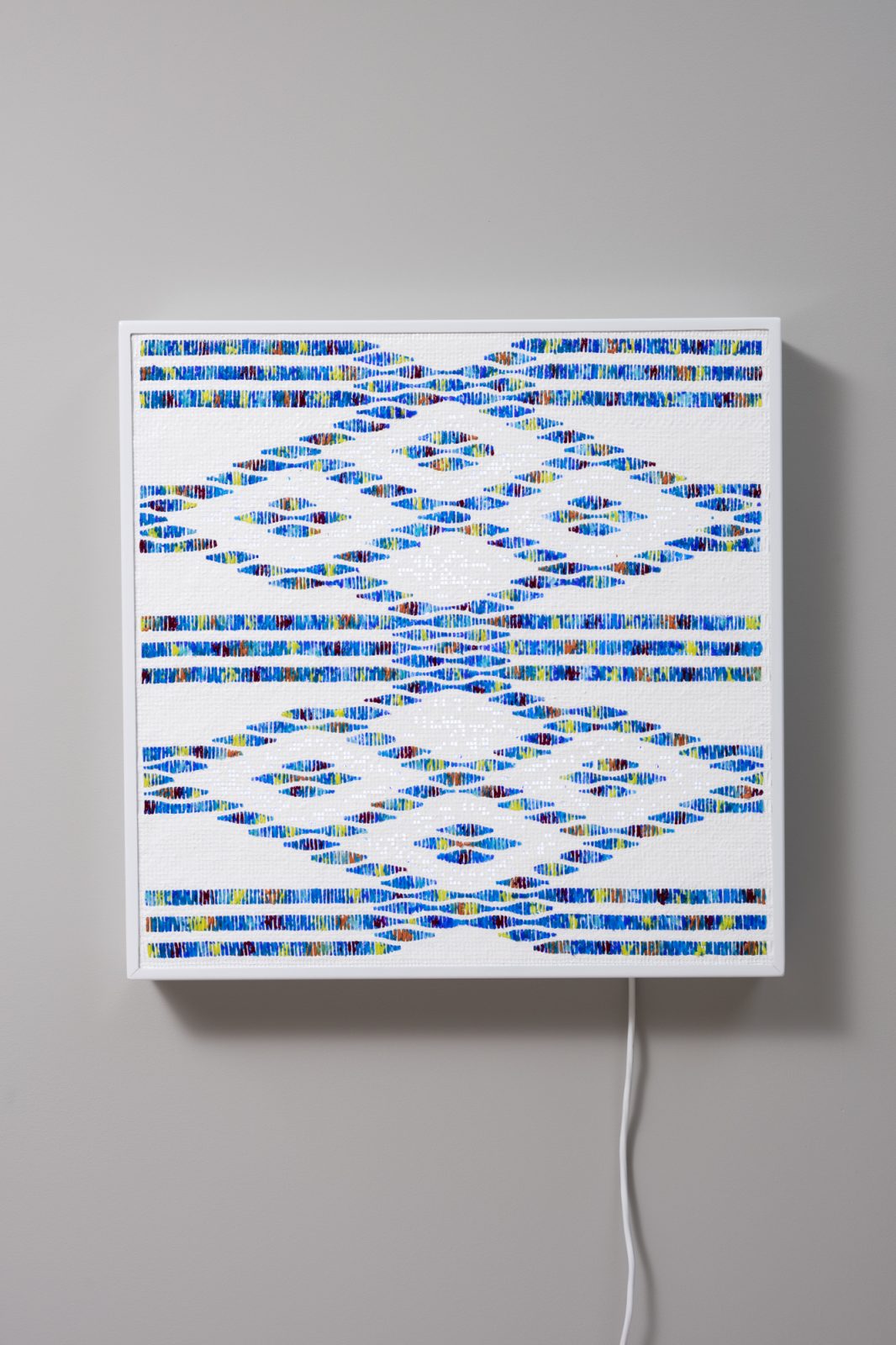
Acrylic gel and pigments on mesh and flexiface on LED lightbox
615 x 615 mm
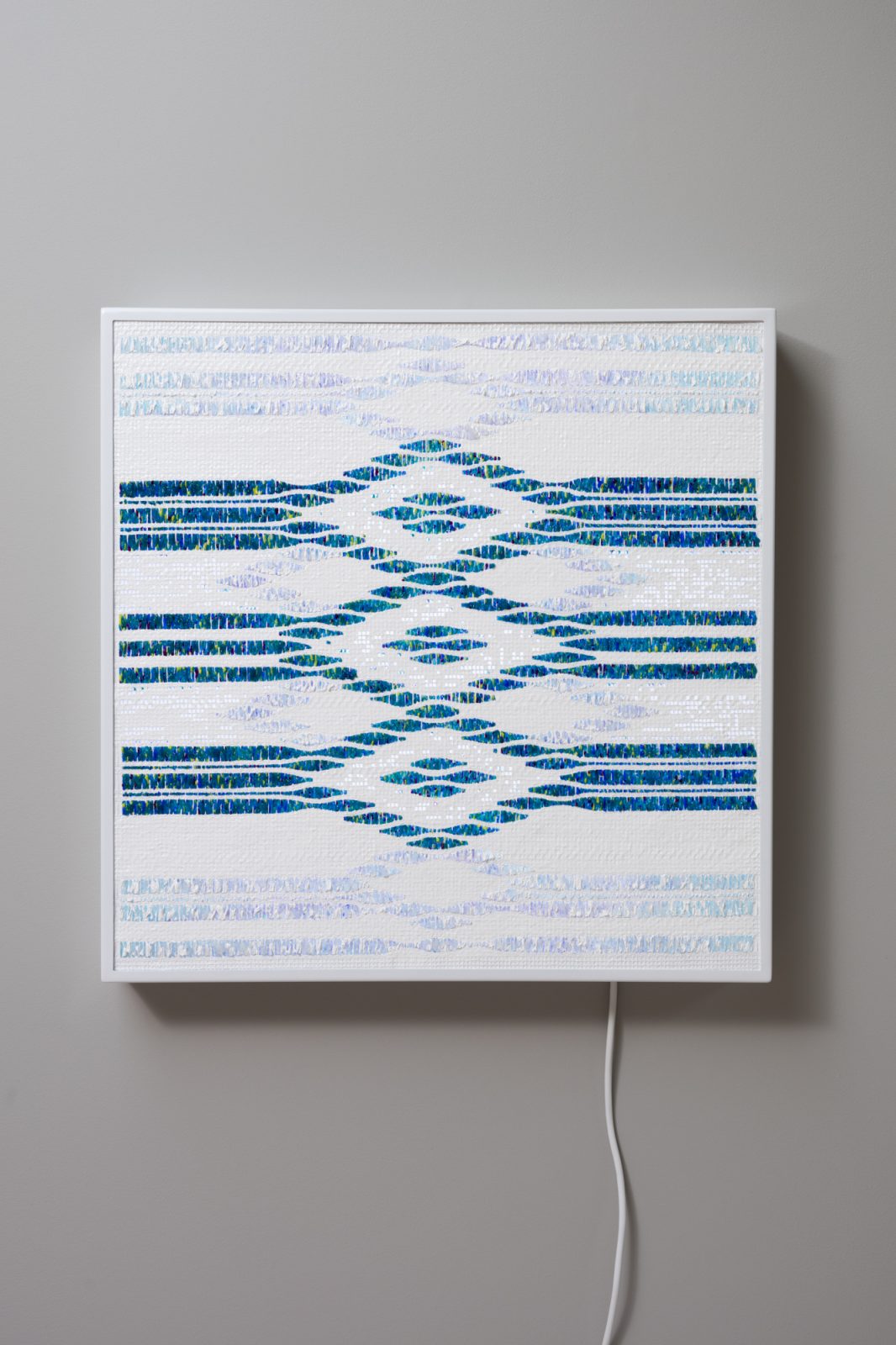
Acrylic gel and pigments on mesh and flexiface on LED lightbox
615 x 615 mm
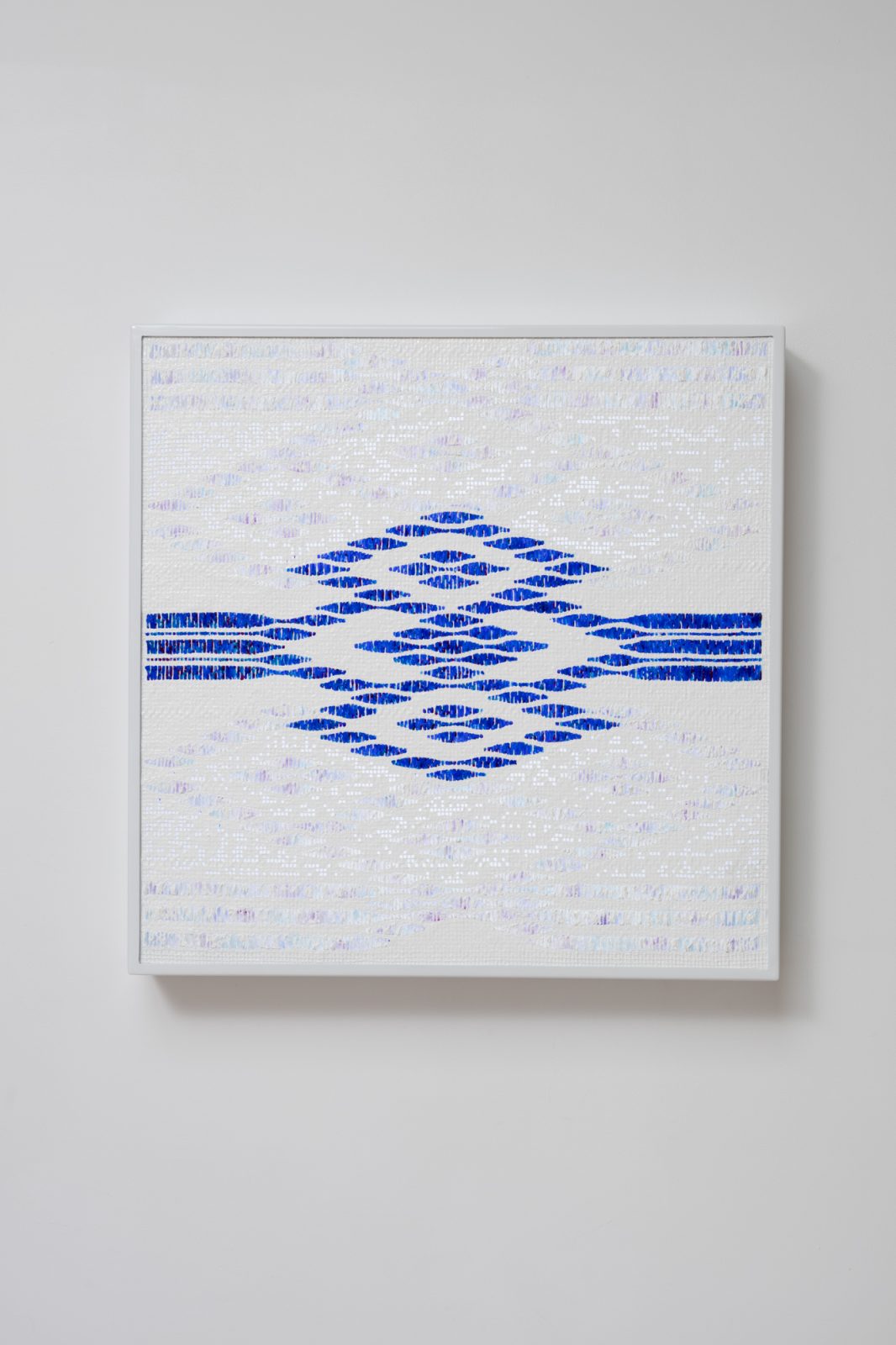
Acrylic gel and pigments on mesh and flexiface on LED lightbox
615 x 615 mm
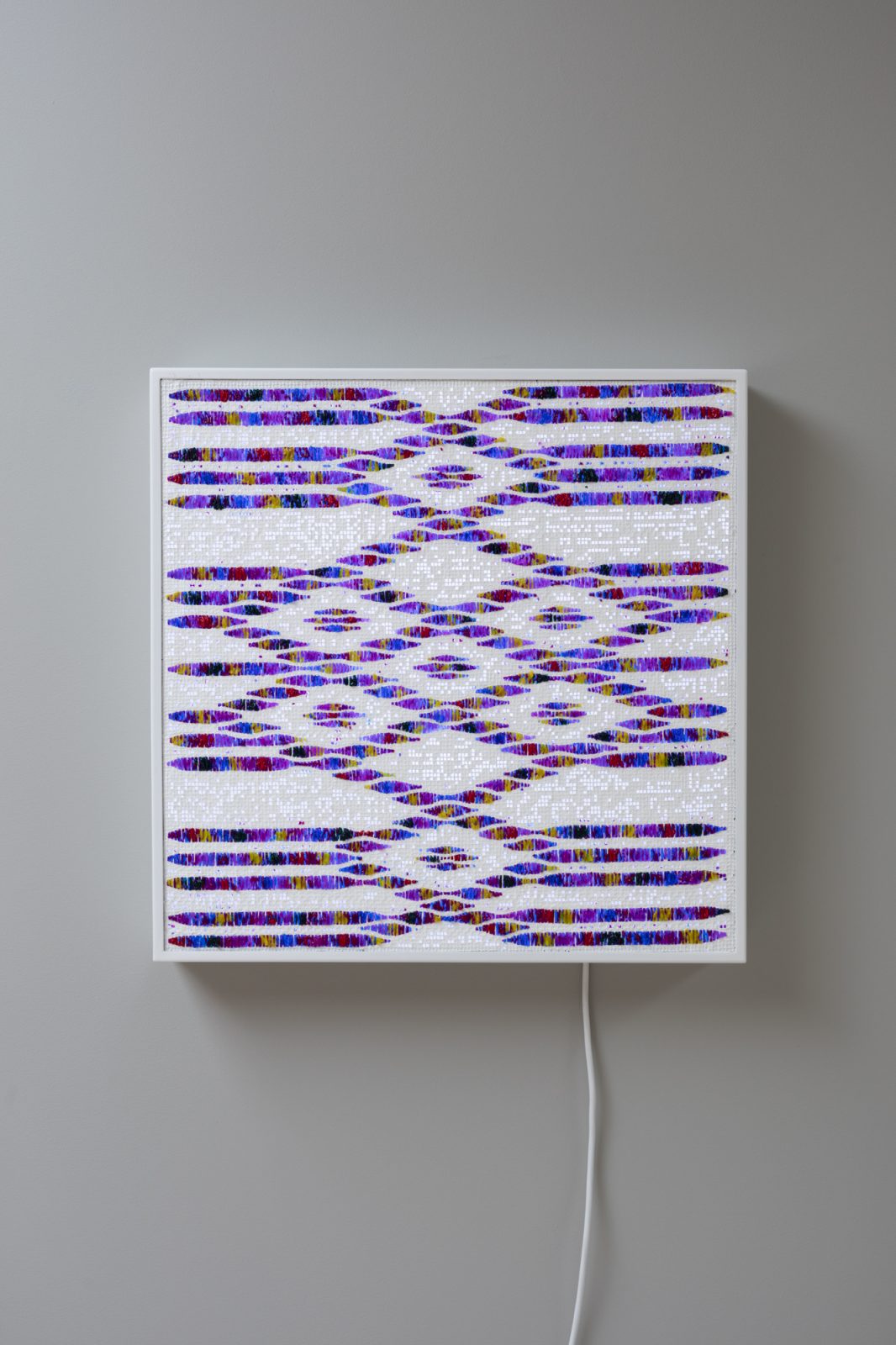
Acrylic gel and pigments on mesh and flexiface on LED lightbox
612 x 612 x 82 mm
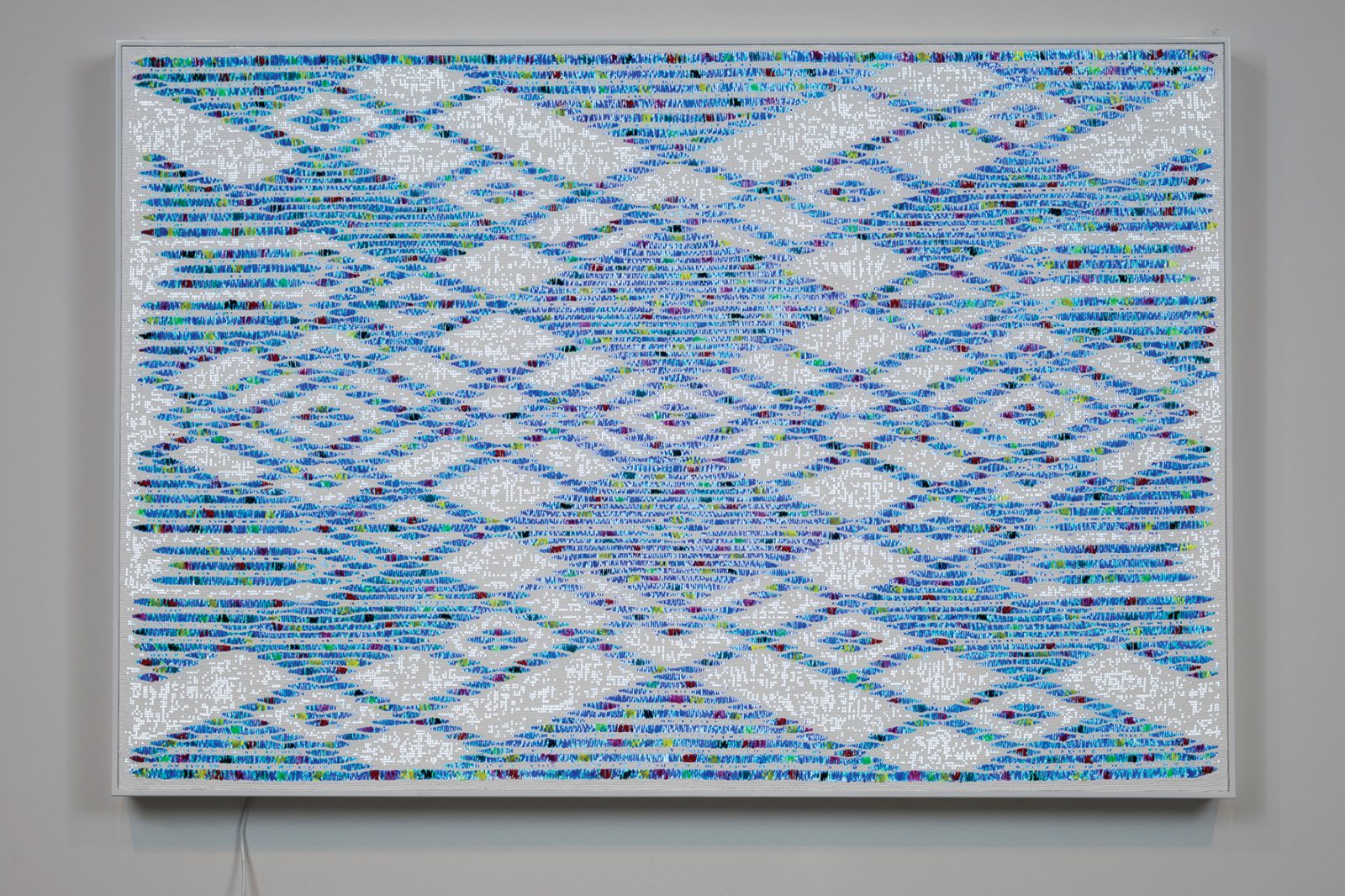
Acrylic gel and pigments on mesh flexiface on LED lightbox
1264 x 1866 x 82 mm
